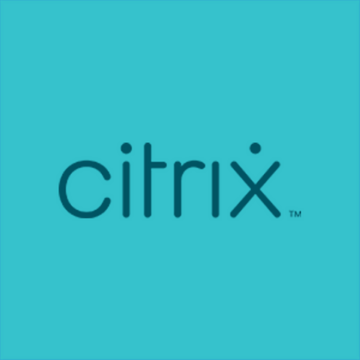The healthcare industry has had to adapt to a record number of changes in the past few years, including rising security threats, revenue disruption, and employee burnout. While all of these issues are difficult for an organization to overcome, employee burnout can be addressed, at least in part, by implementing technologies designed to simplify and accelerate how tasks are performed. However, technology that complicates everyday tasks will hurt the employee experience and reduce productivity.
Implementing technology that improves the employee experience is no longer optional, it’s mandatory. 63 percent of physicians reported burnout by the end of 2021, per the American Medical Association, highlighting how critical it is for organizations to address burnout to retain professionals and maintain the quality of patient care. Citrix solutions can help your organization improve the employee experience by enabling telemedicine, increasing productivity, and onboarding and offboarding contractors quickly to fill staffing shortages.
Increasing productivity
While Electronic Health Records (EHR) have helped healthcare systems better track patients, they have also increased the amount of manual data entry that healthcare workers have to perform. Per a study by Kroth, Morioka-Douglas, Veres, et al, clinicians said that excessive data entry, long cut and pasted notes, in-accessibility of information from multiple providers, and billing notes were the most challenging parts of using EHRs. The time spent filling out these fields adds up quickly. An Annals of Internal Medicine study found that physicians spent over 16 minutes using EHR systems per patient interaction.
With clinicians spending so much time using EHR systems, it is essential to make sure the technology is centered around the end user experience. Citrix solutions enable clinicians to roam around hospital floors or offices, but maintain easy access to EHRs and any other critical application. The Royal Berkshire NHS Foundation Trust put this practice into action, replacing outdated PCs with tap-in access on workstations in every room. Clinicians can now move rooms and have their desktops follow them between workstations, saving up to 45 minutes per shift. Saving that much time translates into faster patient care and more efficient work environments for clinicians.
Enabling Telemedicine
Labor shortages have affected many healthcare organizations, but more so in remote locations. With Citrix, healthcare organizations can support telemedicine to provide remote patient contact, monitoring, and intervention for better care, anywhere. There’s a multitude of use cases for telemedicine powered by Citrix, including nursing to support ambulatory practices, med-sitter programs, and virtual ICU monitoring. All of these use cases have one thing in common, clinicians need to be able to access sensitive patient data from anywhere. Citrix can mitigate security risks by creating a secure enclave on the device or can be entirely virtualized, leaving no patient data on the remote endpoint. Telemedicine has other unique advantages too, including hybrid work for employees that increases flexibility and reduces burnout.
Some organizations are taking advantage of new healthcare solutions that allow clinicians to provide telemedicine services, like the Royal Cornwall Hospital NHS Trust. Using Citrix technology, the Royal Cornwall Trust enabled radiologists to evaluate x-rays from anywhere, and spent less on Citrix than on an equivalent VPN solution. Innovations in healthcare technology means that telemedicine is becoming the new norm for providing care in hard to staff and hard to reach locations.
Onboarding and offboarding quickly
Many healthcare organizations are experiencing staffing shortages across all areas of the business, including non-clinical roles like IT and back office staff. To fill those roles, some organizations have turned to external agencies and contract workers to overcome staffing challenges. But if you have an outdated IT infrastructure, it could take too long to get those staffers online and productive. With Citrix, you can onboard and offboard employees almost instantly, without the need for corporate devices.
Allowing contract workers to bring their own devices means less cost for your organization, but it could also put your security and patient privacy at risk without the right technology in place. Citrix allows you to control access to applications so contractors only have access to the data that they need. One company, Medical Transportation Management (MTM Inc.), needed to securely deliver HIPAA protected data to call center workers and allow them to work from anywhere. With Citrix solutions, MTM Inc. can have staff ready to work with a new client and securely access patient data from the client’s hardware the day after signing the contract, making MTM more dynamic and flexible than ever.
Contracts don’t last forever, though. When the contractor leaves, you can revoke their access in seconds with Citrix, without leaving a trace on the endpoint. This makes sure your patient data stays secure and you get the help your organization needs.
Embrace the future of healthcare technology with Citrix solutions
You can leverage your Citrix environment to improve the employee experience and mitigate burnout. With the current state of healthcare staffing and attrition, you can’t afford to lose employees due to a poor digital experience. See how else Citrix can support your healthcare organization in our e-book.


